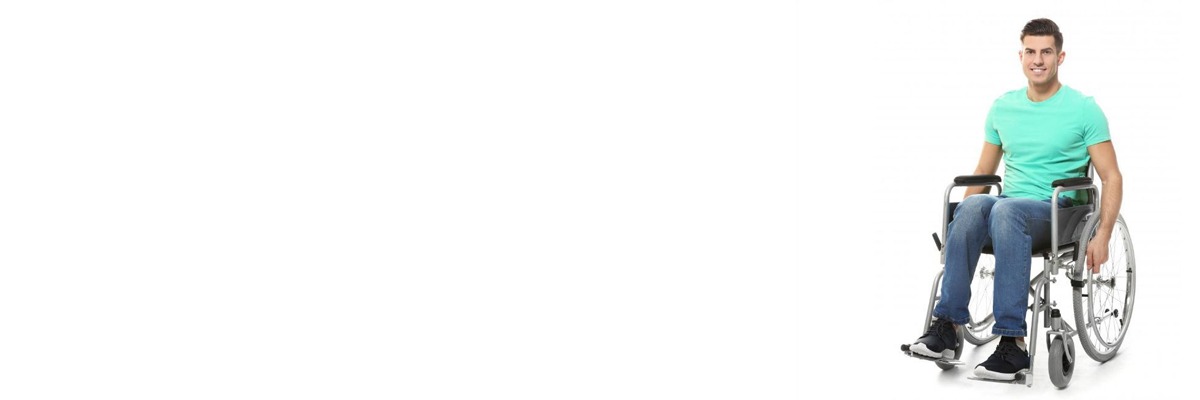
 IJCP Editorial Team
IJCP Editorial Team
Muscular Dystrophy - Symptoms and causes | Medtalks
Muscular Dystrophy
Muscular dystrophy is a collection of disorders that cause muscular weakness and gradually degeneration. This damage and weakness are caused by a deficiency of dystrophin, a protein required for normal muscular function. Lack of this protein can result in difficulties in
Walking
Swallowing
Muscular coordination
The diagnosis of this condition occurs in childhood. Muscular dystrophies can affect both men and women. The two most frequent forms, however, Duchenne and Becker, are substantially more common in men.
Signs & Symptoms of Muscular Dystrophy
There are several types of muscular dystrophy, which vary in symptoms and severity. Some are described below:
Duchenne muscular dystrophy (DMD) is most common among children. The majority of individuals affected are boys. It’s rare for a girls to develop it.
The symptoms include:
Trouble in walking
Loss of reflexes
Difficulty in standing up
Poor posture
Osteoporosis
Scoliosis (an abnormal curvature of the spine)
Difficulty in breathing
Swallowing problems
Cardiac problems
People with DMD often need a wheelchair before the age of adolescence. People with DMD manage to sustain a living until their late teens or early twenties. This is attributed in part to medical advancements, such as cardiac and respiratory care.
Becker Muscular Dystrophy (BMD)
Becker muscular dystrophy (BMD) is a less severe form of DMD. This kind of muscular dystrophy is also more frequent in boys than girls.
Muscle weakness affects the arms and legs the most, with symptoms developing between the ages of 11 to 25 years.
Other BMD symptoms include:
Stepping on one's toes
Muscular cramps
Difficulty in getting up from the floor
Many persons with this illness will not use a wheelchair until they are in their mid-30s or later, and a tiny minority will never use one. Most persons with BMD live into their forties or later.
Congenital Muscular Dystrophy
Congenital muscular dystrophies are frequently seen between birth to 2 years. When parents see that their child's motor skills and muscular control aren't developing, it's a red flag for congenital muscular dystrophy.
Symptoms include:
Muscle wasting
Motor control issues
Incapability to sit or stand without assistance
Foot abnormalities caused by scoliosis
Respiratory problems
Issues related to vision and speech
Myotonic Dystrophy
Myotonia, or the inability to relax your muscles after they have contracted, is caused by this kind of muscular dystrophy. Myotonia is not a sign of other kinds of muscular dystrophy, although it is a symptom of other muscle diseases.
Myotonic dystrophy can affect:
Central nervous system
Facial muscles
Heart
Adrenal glands
Gastrointestinal tract
Eyes
Symptoms are most commonly seen in the face and neck. They are as follows:
Drooping of the facial muscles
Inability to elevate the neck
Droopy eyelids
Difficulty in swallowing
Ptosis
Early balding in the front portion of the head
Cataract
Sweating (increases due to weight reduction)
Impotency
Testicular atrophy
Some of the other forms of muscular dystrophy, although less prevalent, are as follows:
Facioscapulohumeral muscular dystrophy (FSHD)
Limb-girdle muscular dystrophy (LGMD)
Oculopharyngeal muscular dystrophy (OPMD)
Distal muscular dystrophy
Emery-Dreifuss muscular dystrophy (EDMD)
Causes of Muscular Dystrophy
Muscular dystrophy is caused by genetic differences. The proteins that determine muscle integrity are encoded by many genes. The types of genetic pathologies causing muscular dystrophy are described as below:
Inherited Autosomal Dominant Disease
An individual inherits a gene difference on one of the 22 autosomal chromosomes from just one parent. Each gender has a 50% chance of inheriting muscular dystrophy, and both sexes are equally vulnerable. Due to the fact that this is a dominant gene, only one parent has to be a carrier for their kid to have muscular dystrophy.
Inherited Autosomal Recessive Disease
An individual receives a gene difference on one of the 22 autosomal chromosomes from both parents. Both the parents are carriers of the gene but do not have muscular dystrophy. Children have a 50% chance of inheriting one copy of the gene and becoming carriers, as well as a 25% chance of receiving both copies. Both sexes are in danger.
Disorder of the X Chromosome (Sex-linked)
This inheritance is linked to the genes associated with the X chromosome. If a kid inherits a defective X chromosome, they will get muscular dystrophy (as is typically the case with children assigned male at birth).
Spontaneous Mutation
Muscular dystrophy arises as a result of a spontaneous alteration in genes in this situation.Once the mutation has taken place, the carrier of the sufferer can pass it on to their offspring.
Risk Factors for Muscular Dystrophy
Muscular dystrophy is a hereditary disease. Hence, family history is very important.DMD and BMD are connected to the X chromosomes, hence boys are significantly more prone to acquiring them.
Complications of Muscular Dystrophy
Muscular dystrophy advances differently in each individual. Complications differ according to the kind of muscular dystrophy. Some of the more prevalent problems are as follows:
Movement
Breathing
Heart rate
Spine movement
Pregnant women with muscular dystrophy are more likely to transmit it to their child.
Mobility Shifts
Muscle weakness that worsens over time can impede movement. Many persons with muscular dystrophy will eventually need assistive devices, such as a wheelchair. Wheelchairs that are specially built to increase comfort and give proper muscular support.
Respiratory Problems
It can cause breathing difficulties because muscular weakening makes breathing more difficult. Aspiration, or the presence of material in the airway or lungs, can result from difficulty swallowing. Overall, the respiratory system has a more difficult time getting oxygen into the body and releasing carbon dioxide.
Heart Problems
Cardiomyopathy is common in people with muscular dystrophy.
Scoliosis & Contractures
Muscular dystrophy can also damage the skeletal muscles, which allow tendons and joints to move freely. As a result, tendons and joints are pulled into a flexed posture permanently. This is known as a contracture. Scoliosis is caused by a lack of strength in the spinal muscles.
Diagnosis of Muscular Dystrophy
A variety of tests can assist your doctor in diagnosing muscular dystrophy. Your doctor can do the following:
Blood tests: Elevated serum creatine kinase, aldolase, and myoglobin levels may indicate the need for further testing to confirm or rule out muscular dystrophy.
Genetic analysis: High creatine kinase levels and symptoms of dystrophin deficiency may signal the need for genetic testing. This test looks for a significant mutation in the dystrophin (DMD) gene.
Electromyography (EMG): It monitors the electrical activity of your muscles by inserting an electrode needle into your muscle. It can assist doctors in distinguishing between muscular dystrophy and a nerve condition.
Neurological physical examination: This evaluation excludes nervous system problems and assesses muscular strength and reflexes.
Cardiac examination: Cardiac testing detects cardiac abnormalities that can arise in people with muscular dystrophy. An echocardiography is used to examine the structure of the heart.
Imaging examinations: Doctors can see the amount of muscle inside the body using MRI and ultrasound.
Exercises: Exercise evaluations take into account muscle strength, respiration, and the effects of exercise on the body.
Treatment of Muscular Dystrophy
There is currently no cure for muscular dystrophy. Having said that, medications can help control symptoms and reduce the disease's course. Treatment options are determined on your symptoms and the type of muscular dystrophy you have.
Medications
New medicines for certain persons with DMD have been authorised by the Food and Drug Administration (FDA). Many of these therapies include a novel technique known as "exon skipping," in which a defective region (exon) of the dystrophin gene is patched over so that the body can generate the protein.
The new medications are:
Eteplirsen (Exondys 51)
Golodirsen (Vyondys 53)
Viltolarsen (Viltepso)
Casimersen (Amondys 45)
Deflazacort (Emflaza)
Muscle Therapy
Muscle therapy has been shown to be helpful. Therapies include the following:
Physical therapy, including physical exercise and stretching
Respiratory therapy to keep muscles strong and flexible
Speech therapy, which uses particular strategies such as slower speech, stopping between breaths, and utilizing special equipment to save muscular strength
Occupational therapy, which focuses on daily tasks, can help people with muscular dystrophy in:
becoming more self-sufficient
increasing coping abilities
enhancing social skills
access to various community services
Other Treatments
Surgery may be used to treat certain contractures.
Corticosteroids and physical therapy may aid in the prevention of scoliosis.
Conclusion
The type of muscular dystrophy is determined by:
Symptoms
Age of onset
Prognosis
New research is being conducted in the hopes of finding a cure for DMD. In 2018, scientists discovered a method to fix a gene in canine models, assuring appropriate dystrophin production. They want to utilize this sophisticated gene editing approach on patients with DMD one day.
References

IJCP Editorial Team
Comprising seasoned professionals and experts from the medical field, the IJCP editorial team is dedicated to delivering timely and accurate content and thriving to provide attention-grabbing information for the readers. What sets them apart are their diverse expertise, spanning academia, research, and clinical practice, and their dedication to upholding the highest standards of quality and integrity. With a wealth of experience and a commitment to excellence, the IJCP editorial team strives to provide valuable perspectives, the latest trends, and in-depth analyses across various medical domains, all in a way that keeps you interested and engaged.










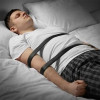

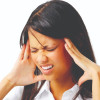

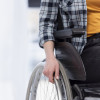
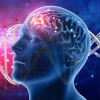
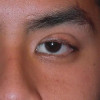



Please login to comment on this article